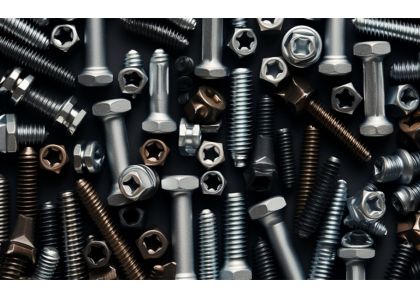
The Differences Between Stainless Steel Screws and Galvanized/nickel plated Screws
In daily life, although stainless steel screws, galvanized screws, and nickel plated screws are all screws, they have their own unique characteristics and applications. To quickly distinguish them, we can use some simple tricks. Among them, the most direct and effective method is to observe the color. Stainless steel screws usually have the original color of iron, which can help us make an initial judgment about their material. This color is natural and plain, giving a sense of friendliness. In contrast, galvanized screws have diverse colors due to their unique galvanizing process, which may be white silver-gray, colorful, or dark black, each with its own uniqueness. And nickel plated screws are known for their shiny silver luster, bright and dazzling, as if shining with the brilliance of metal.
By Magnetic Property
In addition to the color differences, we can further distinguish these screws by magnetic property. Stainless steel does not have magnetic property, so it cannot be attracted by a magnet. While galvanized and nickel plated screws have magnetic property due to the layer of metal covering their surfaces, they can be easily attracted by a magnet. This simple physical characteristic provides us with a practical method to distinguish different types of screws.
Chemical Reagent Reaction
Furthermore, we can use the introduction of oxidants or strong acids and bases to conduct more detailed identification of the screw types. Stainless steel, due to its chromium and nickel elements, exhibits excellent corrosion resistance and can resist the erosion of these chemical substances. However, the passivation film of galvanized and nickel plated screws, although it can provide certain protection, gradually weakens its protective effect when exposed to strong acids and strong bases, causing the screws to be corroded. In contrast, the zinc layer of galvanized screws has weaker corrosion resistance, so they will suffer corrosion more quickly in the same environment.
By Observing Color, We Can Make an Initial Judgment on the Type of Screw. Stainless steel screws usually present a silver-white color, while galvanized and nickel plated screws may have different colors. Moreover, using a magnet test can further distinguish stainless steel screws, as stainless steel is magnetic. At the same time, the reaction of chemical reagents is also an effective method, which can reveal the material of the screws more deeply.